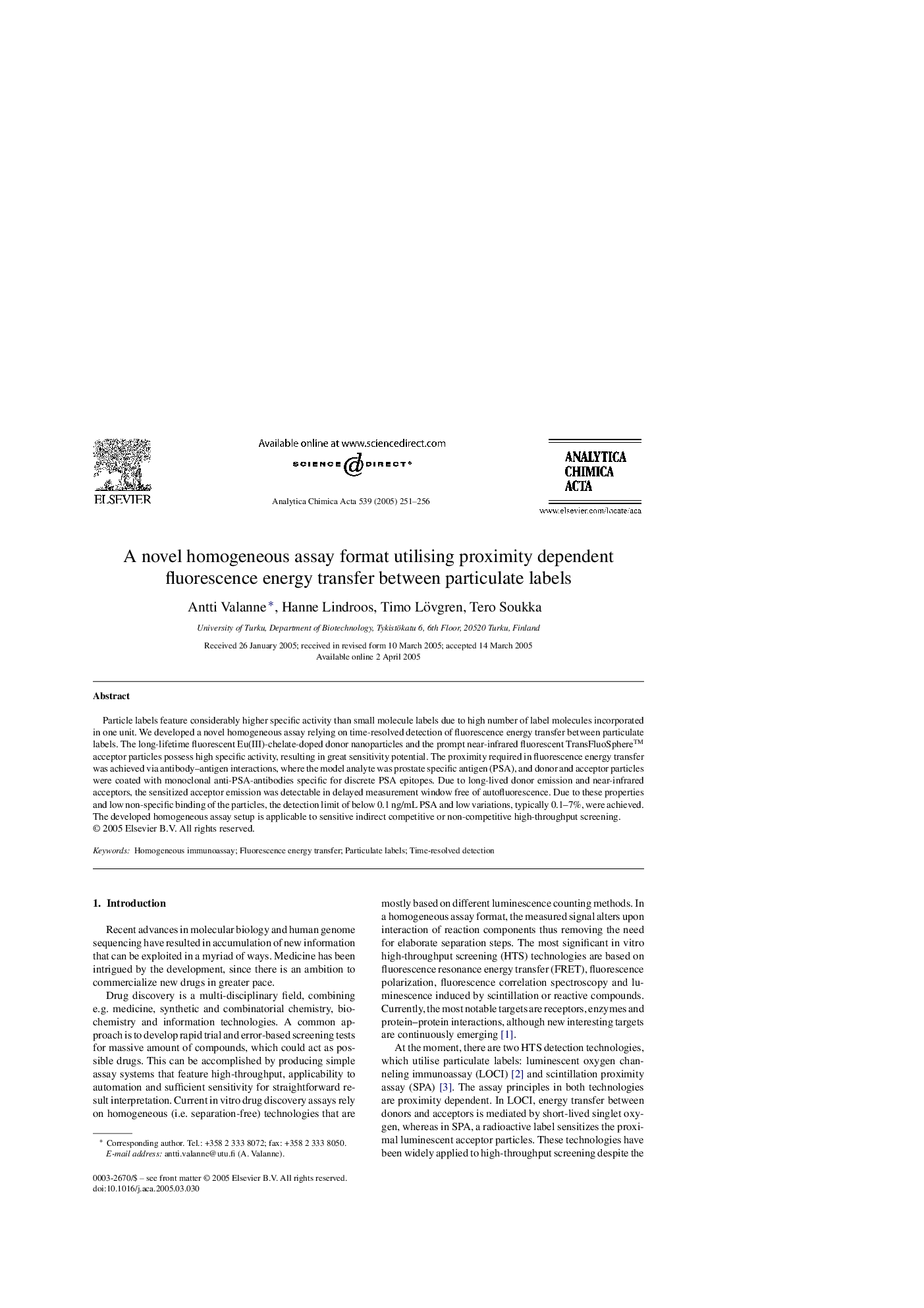| Article ID | Journal | Published Year | Pages | File Type |
|---|---|---|---|---|
| 9743693 | Analytica Chimica Acta | 2005 | 6 Pages |
Abstract
Particle labels feature considerably higher specific activity than small molecule labels due to high number of label molecules incorporated in one unit. We developed a novel homogeneous assay relying on time-resolved detection of fluorescence energy transfer between particulate labels. The long-lifetime fluorescent Eu(III)-chelate-doped donor nanoparticles and the prompt near-infrared fluorescent TransFluoSphere⢠acceptor particles possess high specific activity, resulting in great sensitivity potential. The proximity required in fluorescence energy transfer was achieved via antibody-antigen interactions, where the model analyte was prostate specific antigen (PSA), and donor and acceptor particles were coated with monoclonal anti-PSA-antibodies specific for discrete PSA epitopes. Due to long-lived donor emission and near-infrared acceptors, the sensitized acceptor emission was detectable in delayed measurement window free of autofluorescence. Due to these properties and low non-specific binding of the particles, the detection limit of below 0.1 ng/mL PSA and low variations, typically 0.1-7%, were achieved. The developed homogeneous assay setup is applicable to sensitive indirect competitive or non-competitive high-throughput screening.
Related Topics
Physical Sciences and Engineering
Chemistry
Analytical Chemistry
Authors
Antti Valanne, Hanne Lindroos, Timo Lövgren, Tero Soukka,
